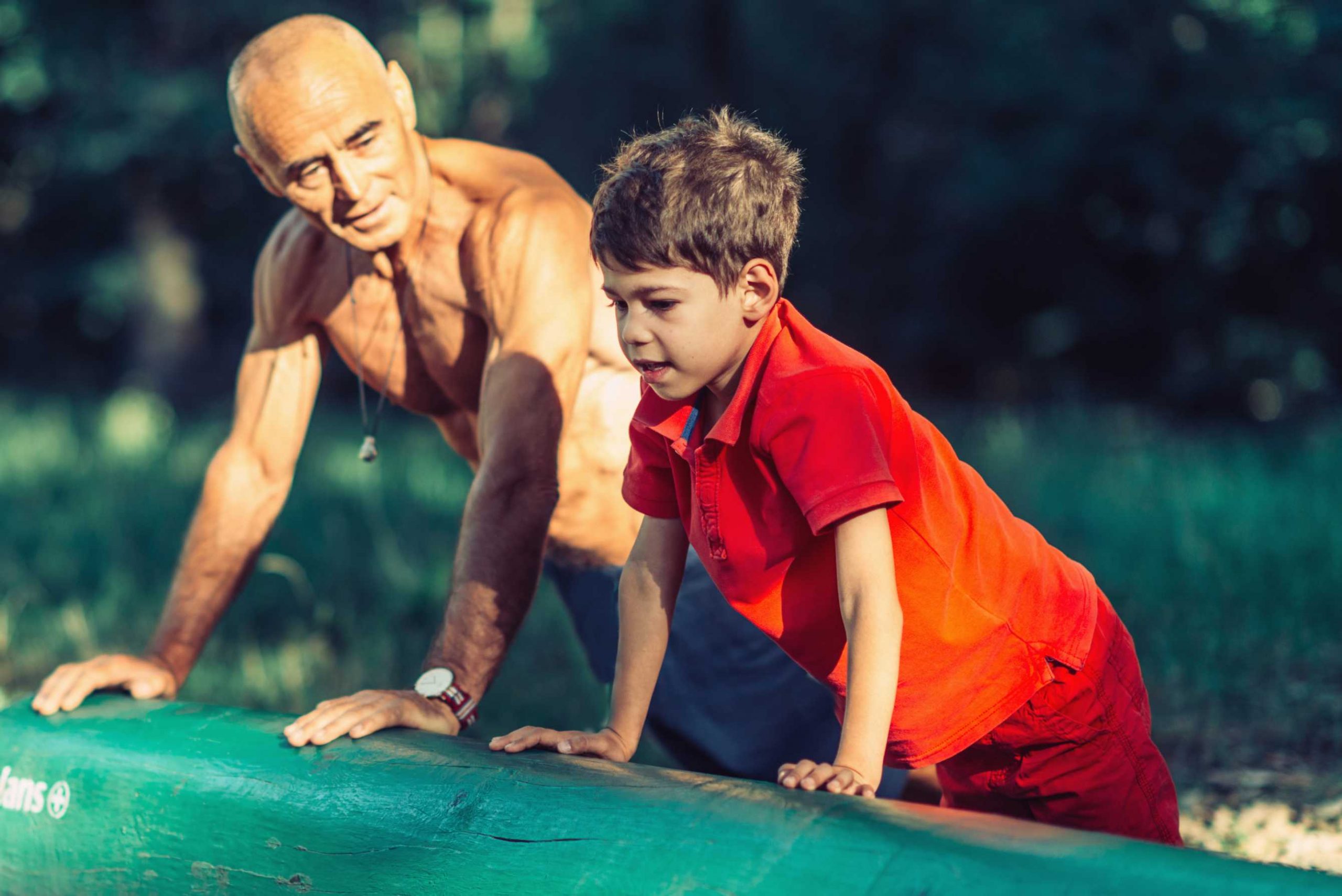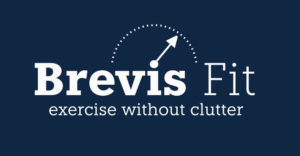Introduction
In this post, we are diving into the core purpose of an exercise program or exercise for short. To define exercise, we are first going to differentiate it from general physical activity. With this, you will have a firm understanding as to why not all physical activities promote health and longevity. Later, we will define the mechanism determining the quality of the exercise stimulus. With this, you will be able to focus on the most important aspect when performing exercise – fatigue and what you are after as a long term consequence of a properly performed exercise program – strength.
Strength as the major marker of life quality
By definition, exercise is a subset of physical activities, which are aimed at improving your health, longevity, and physical fitness. Together, we can summarize that the goal of exercise is to improve your life quality [1]. Looking at research defining the markers of life quality, strength has been established as being at the forefront, since a stronger body experiences less pain and discomfort [2]–[4]. From that we can deduce that to improve your life quality, exercise should focus on improving your strength. Exercising regularly should allow you to perform your daily activities with less pain, discomfort, and endure them for a longer duration. Stated simply, the less pain you perceive during the course of your day, the higher your life quality.
BEING STRONGER MAKES YOU MORE ACTIVE
Additionally, through progress and improvement in strength, you should also be able to participate in new and more demanding activities as well, such as doing more challenging work around the house, participating in new sporting activities, etc. Improving your strength therefore leads to more enjoyable and fun activities you can experience and perform with your body. It is important to note, however, that these activities could not serve as a replacement for the exercise itself. As it is usually in nature of (demanding) physical activities, they can put your health in jeopardy by demonstrating a high injury rate.
The big confusion between skills and Exercise
One of the big confusions one can perceive in the health club world is the focus on the movement instead of on the muscles themselves. We call the former skill training and the latter exercise. And while strength gains can be measured and demonstrated through improving your skills, the resulting external marker of strength gain comes from various sites or explanations.
Improving our skills makes us lift more weights, but does not necessarily make us stronger
For instance, when training for lifting a barbell overhead, you don’t only improve the muscular structures involved, but also the skill set of lifting the barbell. Strength gains in that instance could come out as a result of the skill improvement alone. So the muscles themselves got stronger to a degree as demonstrated by an increase of performance (lifting more weight), but that improvement did not come about only from an increase in muscular strength and size. This means that other aspects of lifting the barbell itself have been improved. In doing so, the proficiency and intensity of muscular improvement have been diversified into technical skills. This is good when training for performing a specific movement pattern i.e. skill training, but it has little carryover to other activities, especially those that we do outside the gym.
FOCUS ON MUSCLE QUALITY
A better approach to improving our ability to overcome physical stress is to improve our muscle quality. This makes our muscular structure stronger, larger, and more efficient. This will provide us a better predisposition for overcoming forces being applied to our muscular structures, without relying on our skill and motor control (which however is also important and a welcome addition).
THE MOST EFFICIENT WAY TO IMPROVE MUSCLE QUALITY IS THROUGH EXERCISE
The most efficient way to improve our muscle quality is through exercise. Because our sole purpose is to increase our muscle quality, chances of injury have to be eliminated. Similarly to rehabilitation, our aim is to improve day by day, so we reach the desired strength level. In the case of rehabilitation, we aim to gain back to our basal strength levels, while in exercise we are aiming to increase those levels to new heights.
Improving muscle quality
Improving muscle quality means that the muscular tissue itself is capable of producing and resisting higher forces. This is achieved by improving different aspects of the whole muscular system [5]:
- Neuronal connection – control of movement and intensity of muscular contraction.
- Cardiovascular health – the rate of blood supply to working muscular tissues.
- Muscular size – an increase in the number and size of muscular fibers, providing more resources for force production.
Metabolic efficiency – the rate of energy production from available nutrients in the blood supply.
INCREASING MUSCULAR STRENGTH IMPROVES OTHER ASPECTS OF OUR BODY
By focusing on providing a challenging resistance to our muscular structures, we are improving on all of these aspects. Through (correct) exercise, we improve our muscle fiber make-up, improve the strength of our bones, increase our ability to move nutrients and oxygen through our blood supply, improve our ability to use nutrients and convert them to energy and improve our ability to voluntarily control the (muscular) motor units. If we focus on improving our muscular strength through improvements at the tissue level itself, the whole collection of those facets will need to improve to allow positive adaptations.
Muscular stress and fatigue
To stimulate positive changes in our muscles, we need to provide them with adequate stress. This stress comes in a form of resistance, which in contrast demands high levels of intense muscular contractions.
REGULAR EXPOSURE TO STRESS LEADS TO ADAPTATION AND GROWTH
By providing the stress repeatedly (and frequently enough), through time, our body seeks to alleviate the effort required to overcome it. And our body does that by making muscles improve in all the facets listed above. By adapting to the stress, exposure to the same stimulus (resistance in the case of muscles), does not provide the same challenge anymore. By regularly performing exercise to a point of high exertion i.e. intensity, this stress-response cycle can be evoked on a regular basis.
MORE FATIGUE, MORE INTENSITY
The marker that defines how close you are to reaching the target threshold of intensity is called fatigue. When performing an exercise, your muscles get weaker. When the momentary strength of your muscles fails to be adequate to further perform the exercise, you have reached the so-called point of momentary muscular failure – MMF. And to make the exercise as efficient and productive, you should aim to reach the point of MMF as quickly as possible.
Efficiently fatiguing your muscles
To provoke the adaptation mechanisms, we need to seek a high level of effort intensity with respect to the muscular output. This means that the goal is to put the muscular structures in a situation, where overcoming the provided resistance represents a very challenging task.
CHALLENGE YOUR MUSCLES THROUGH RESISTANCE, NOT MOVEMENT
However, we do need to emphasize that what we are looking for is to challenge the muscular structures, and not our bodily coordination, proprioception, and other facets of executing a movement pattern. Ideally, when performing an exercise, there would be no resources used for those aspects related to exercise execution. Rather, we would be able to focus our energy and determination on fatiguing the muscular structures themselves. Therefore, for the purpose of stimulating the adaptive response, all of the factors, not contributing to that, should be minimized.
USE A LIMITED RANGE OF MOTION AND CONSTANT TENSION
A good starting point is to avoid the parts of the movement, where you can rest and regain back your strength as well as to reduce the speed of movement. With respect to precision and safety, exercise should not differ much from physical rehabilitation. The only difference is the higher loads being used, since we are trying to go beyond our baseline strength levels, compared to physical therapy where we are trying to get back to the baseline.
Example: Running versus doing a wall sit
An example that can demonstrate the difference between skill and exercise can be shown comparing a wall seat and a running activity.
RUNNING REQUIRES A LOT OF COORDINATION AND LITTLE STRENGTH
Running has many obstacles we need to overcome to meaningfully load the quadriceps muscles. We need to be proficient at this movement pattern i.e. know how to run, we can not get out of breath before our muscles reach a deep level of fatigue, we need make sure we don’t fall while running or feel pain in joints (hips, knees, ankles, etc.).
IN A WALL SEAT WE STAND STILL, BUT OUR MUSCLES FATIGUE VERY FAST
Comparing running to an exercise like a wall sit, where except for getting in and out of the active position, there is no other factor that you need to overcome for reaching a high level of fatigue. From the start of the wall sit, the muscles of the quadriceps are engaged the fastest and are also the one which fatigue the fastest as well. After a minute or two, the fatigue in the quadriceps is many times more pronounced, compared to a half an hour run.
EXERCISE FATIGUES TARGETED MUSCLES FAST WITH LITTLE SKILL REQUIRED
The time difference in fatigue is a reflection of how direct and precise the wall seat is compared to running (when talking about improving the musculature of the quadriceps). When we are talking about exercise, we are talking about movement patterns that are easy to perform, but provide an effective way of loading and stressing the muscular tissues, while also eliminating stress on the joints and other aspects that would prevent us from reaching a deep level of muscular fatigue.
Running
Because of the nature of the movement, running does not provide adequate resistance to the muscles of your lower body.
Wall sit
A wall seat provides the perfect combination of safety and resistance to improve the strength of your lower body.
Conclusion
Through this article, we have defined the purpose of an exercise program i.e. exercise. We have established that the main purpose is to improve our movement-related quality of life. This means that with exercise you should improve your ability to perform and endure in your daily chores and physical tasks. This can be achieved most effectively by focusing on gaining strength. We achieve that by providing (on a regular schedule) meaningful resistance to our musculature. During exercise, we use the resistance to aggressively fatigue our muscles. And it’s the level of fatigue that will determine the quality of the adaptive response and eventually leading to improvement of muscular strength. To make this a sustainable and long term process, we should aim at movement patterns that require low skill and motor control but can provide high levels of stress to the targeted musculature.
Reference
[2] N. K. D. Semariasih, N. L. N. Andayani, and I. M. Muliarta, “THE CORELATION BETWEEN GRIP MUSCLES’ STRENTGH AND A LEVEL OF FUNCTIONAL ABILITY AMONG THE ELDERLY WOMEN IN TISTA KERAMBITAN, TABANAN,” Maj. Ilm. Fisioter. Indones., vol. 7, no. 2, pp. 40–43, May 2019.

